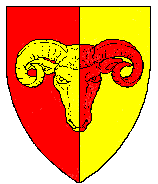This document is also available in: text or Word formats.
Chur-Bulgaria-art -
8/21/13
"Medieval churches of
Nessebur, Bulgaria" by Tamara of Thamesreach.
NOTE: See also the files:
Rila-Bulgaria-art, East-Eur-msg, fd-Romania-msg, fd-East-Eur-msg, Icons-art,
icons-msg, pilgrimages-msg, buildings-msg, frescoes-msg.
************************************************************************
NOTICE -
This article was submitted to me
by the author for inclusion in this set of files, called Stefan's Florilegium.
These files are available on the
Internet at: http://www.florilegium.org
Copyright to the contents of
this file remains with the author or translator.
While the author will likely
give permission for this work to be reprinted in SCA type publications, please
check with the author first or check for any permissions granted at the end of
this file.
Thank you,
Mark S. Harris...AKA:..Stefan li
Rous
stefan at florilegium.org
************************************************************************
Medieval churches of Nessebur, Bulgaria
by Tamara of Thamesreach
Located on what was originally an island off the Black Sea coast of Bulgaria, Nessebur has been inhabited by many different peoples. First built as a fortified Thracian settlement, then occupied as a Greek polis, a Roman colony, a Byzantine town, and eventually by the Ottoman Turks, it is now a small Bulgarian village and a World UNESCO Heritage site. Visitors enter Nessebur on a manmade causeway (now rebuilt for auto and foot traffic) which leads through the remains of the medieval wall.

Following a circular route through town leads you past more than a dozen churches that date from the 5th to 14th centuries. The 5th century three-naved Church of St Sophia, also known as the Old Bishopric (Stara Mitropoliya) is centrally located on the peninsula. Tourists enjoy the shade of the central nave on sunny days, as seen here.

The 13th century Church of Christ Pantocrator has remained nearly unchanged throughout the centuries, offering visitors a good view of Byzantine architecture. Note the green ceramic inlays in the arches, which are typical in this region as well as the unusual octagonal tower.

The 13th century Church of St. Paraskeva is also notable for the blue-green ceramic work in the arches. It remained in regular use until the 19th century.

The Church of St. Stephen, also known the New Bishopric (Stara Mitropoliya) was constructed in the 11th century and enlarged on the western side in the 16th century. It is well-preserved and has many of its original frescoes, although some have been restored.


The town of Nesebar is one of the oldest towns in Europe. It is the
successor of the ancient Thracian settlement called Mesambria founded in
the Second century AD. Its name means town of Melsa. Since 510 AD it was
turned into Greek colony town by Dorian settlers. They called it Mesambria
and turned it a rival to the town of Apollo for the Black Sea trade. There
was a theatre and a temple of the Greek God Apollo in it. Brass and silver
money were coined there, and in the third century AD - golden ones. It was
occupied in 72 AD by a Roman garrison. The town was of secondary importance
during the Roman era. It started to play important role again in III-IV
century. Around the year 680 the town was an Episcopal centre, and in
VII-VIII century - an important, and strong and protected Byzantine naval
base. In the year 812 Khan Krum conquered the town. In 864 Boris I yielded
the possession of the town to Byzantine, but king Simeon captured it again.
Since XI century the Slav name Messebar or Nessebar has been used together
with the original name Mesambria. During the Second Bulgarian Kingdom the town rulers were either
Bulgarians or Byzantines. The peak of its development was during the reign
of king Alexander I when the town was one of the most important centres in
the Bulgarian State. The official documents issued in Mesambria gave
evidence of donations given to Nessebar for the building of churches and
monasteries; according to the legends - more than 40. The crusaders led by Amedei VI of Savoy captured the town in 1366 and
gave it to the Byzantines. The chronicles of Mesambria gave us information
about the time when the town was enslaved by the Turks in 1371. The town
kept its importance as an important harbour during the Turkish slavery:
ships were built; corns, wood, etc. were exported. After the liberation it
was turned into a small fishing town. In 1956 the town was proclaimed an architectural and archeological
reserve. The remnants of an antique fortified wall with a gate dating from
III-IV century, the churches from V-VI century and the ones dating from the
medieval period (X-XIV century), which are fine works of the medieval
Bulgarian and Byzantine architecture, the 60 houses of the revival period,
give the town unique appearance and atmosphere.


There are many other churches to be seen in Nessebur and many other treasures to view in its newly renovated archaeological museum. A visit to this corner of Drachenwald is well worth the time!
------
Copyright 2012 by Lydia J. Krise,
Dean of Students. American University in Bulgaria. 1 Georgi Izmerliev Square,
Blagoevgrad 2700 Bulgaria. <Lydia at aubg.bg>. Permission is granted for
republication in SCA-related publications, provided the author is credited. Addresses change, but a reasonable
attempt should be made to ensure that the author is notified of the publication
and if possible receives a copy.
If this article is reprinted in
a publication, I would appreciate a notice in the publication that you found
this article in the Florilegium. I would also appreciate an email to myself, so
that I can track which articles are being reprinted. Thanks. -Stefan.
<the end>
 Formatting copyright © Mark S. Harris (THLord Stefan li Rous).
Formatting copyright © Mark S. Harris (THLord Stefan li Rous).